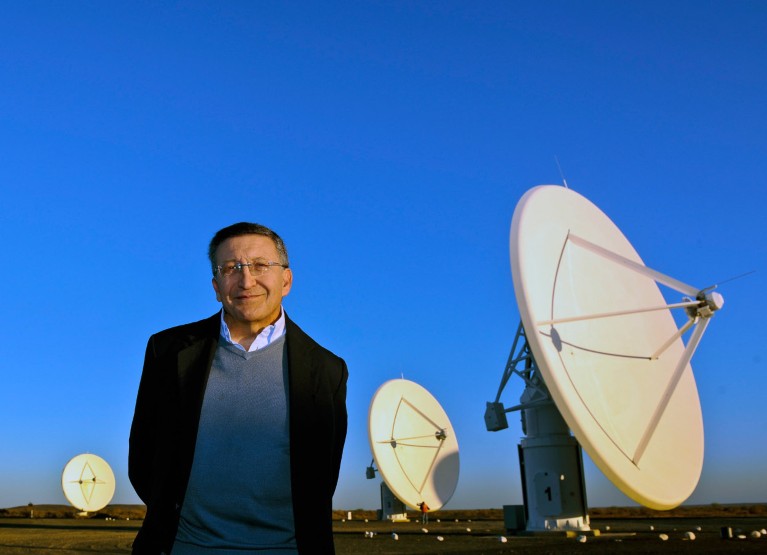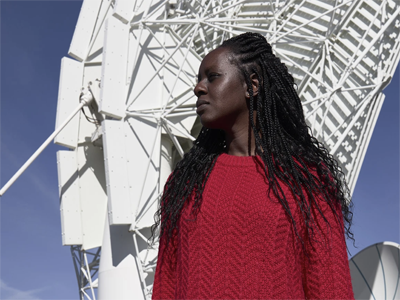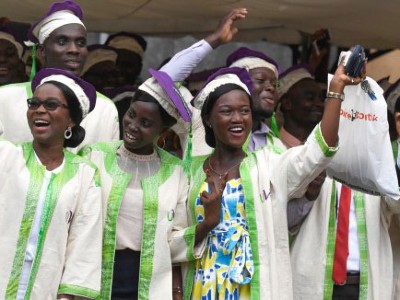
Bernie Fanaroff, at a part of the Sq. Kilometre Array in Carnavon, South Africa, labored to make sure that Black African college students had alternatives to turn into radioastronomers. Credit score: Jaco Marais/Foto24/Gallo Pictures/Getty
After we threw our hat within the ring to host the Sq. Kilometre Array (SKA), we knew that we needed to be very targeted in how we spent our cash. One of many circumstances for presidency help for the bid, each from the South African authorities and from the African Union heads of state, was human-capital growth on the continent. Again then, there have been a handful of radioastronomers in Africa. We needed to create a self-discipline right here.
Within the first yr, we had about 40 million rand (US$2 million) to start out creating the abilities to construct and use a pathfinder telescope to point out that South Africa had the aptitude to host the SKA. We didn’t wish to unfold the cash too thinly and have been strict about which tasks certified for help. We began to get superb folks, however there weren’t sufficient Black or feminine college students coming into the programme for there to be any sort of transformation on the graduate degree. Black folks account for greater than 80% of the South African inhabitants however, traditionally, astronomers in South Africa have been white males. We needed to alter that.
Star-struck: residing my childhood dream as an astronomer
In response, we prolonged our growth programme to undergraduate college students, however we nonetheless struggled to draw Black and feminine candidates, and so we went additional again, to secondary faculties. For instance, though our scholarship programme affords preferential entry to college students from the Karoo, the area in South Africa the place the telescopes are based mostly, pupils there struggled to fulfill the college entrance necessities for science and arithmetic. So, we relocated specialist secondary-school lecturers to the realm to create an end-to-end course of.
There’s an entire pool of younger folks on the market who’re extraordinarily succesful however haven’t had a chance to get into science. There are actual social and financial boundaries for girls and for Black college students in South Africa.
You may’t count on various candidates to seem out of nowhere. You’ve got to go and search for these folks, discover them and acknowledge that, given the circumstances, they’ve immense promise. Then, it’s a must to take an opportunity on that particular person.
For those who come from an under-resourced college or beforehand deprived space, it’s troublesome to barter college — a completely new surroundings. College students might need actual gaps of their primary studying, but it surely’s not solely that. They usually don’t have the boldness, the examine expertise or the data of college paperwork to succeed. A 2019 authorities examine1 discovered that three out of 5 less-privileged South African college students don’t full their college research.
Profession sources for African scientists
College students have gotten to really feel that there’s someone there, even simply as a psychological mentor. Kim Anthony, head of human-capital growth for the South African Radio Astronomy Observatory in Cape City, and her staff have been very hands-on and made an enormous distinction by merely caring about these college students.
We additionally required universities to point out that that they had the suitable folks to mentor college students. Initially, there weren’t sufficient supervisors for the rising pool of scholars, so we funded 5 research-chair positions and a few mid-career positions, with funds for college kids, postdocs and start-up prices. That’s been very profitable.
Planting the seeds of astronomy
South Africa’s 64-dish MeerKAT telescope, inaugurated in 2018, demonstrated that the nation was changing into a hub for superior radioastronomy, know-how and science. MeerKAT, which is among the most delicate radio telescopes on the planet, will finally be absorbed into the SKA. It attracted world-leading researchers in science and engineering, and our younger folks now have entry to this telescope and that worldwide experience.



